 Petzlover
Petzlover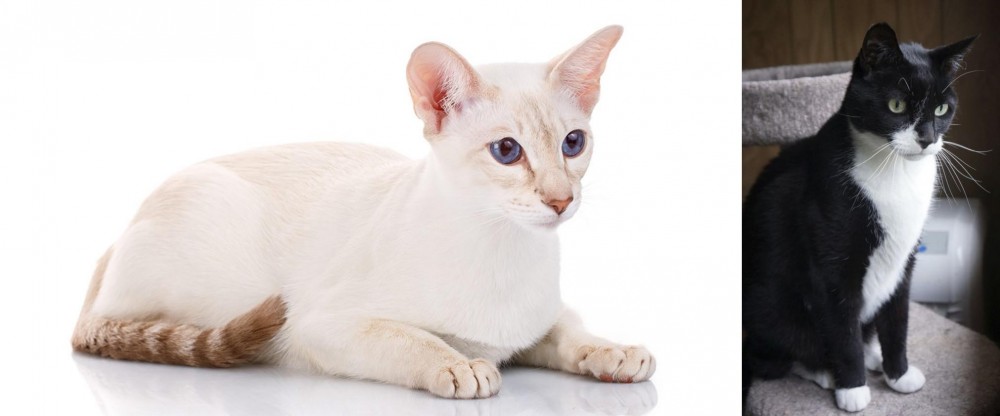 Colorpoint Shorthair is originated from United Kingdom but Tuxedo is originated from United States. Both Colorpoint Shorthair and Tuxedo are having almost same weight. Colorpoint Shorthair may live 4 years less than Tuxedo. Both Colorpoint Shorthair and Tuxedo has same litter size. Colorpoint Shorthair requires Low Maintenance. But Tuxedo requires Moderate Maintenance
Colorpoint Shorthair is originated from United Kingdom but Tuxedo is originated from United States. Both Colorpoint Shorthair and Tuxedo are having almost same weight. Colorpoint Shorthair may live 4 years less than Tuxedo. Both Colorpoint Shorthair and Tuxedo has same litter size. Colorpoint Shorthair requires Low Maintenance. But Tuxedo requires Moderate Maintenance
 The Colorpoint Shorthair is a Siamese cat that came about when the Siamese cat was used with the red American Shorthair to bring about new colors.
The Colorpoint Shorthair is a Siamese cat that came about when the Siamese cat was used with the red American Shorthair to bring about new colors.
The actual name is given by the CFA or Cat Fanciers’ Association to refer to pointed cats that have Siamese parents and that have many colors other than the usual 4 Siamese colors which are blue, lilac, seal, and chocolate.
It was in the 1940s and 1950s that cat breeders in the UK and the USA wanted to develop a Siamese cat with red points as opposed to the traditional Siamese colors. It was in 1964 that these red and cream Colorpoint Shorthairs were awarded championship status with the Cat Fanciers’ Association.
Today, different cat registries recognize the Colorpoint Shorthair as a separate breed while others see it as a variation of the Siamese.
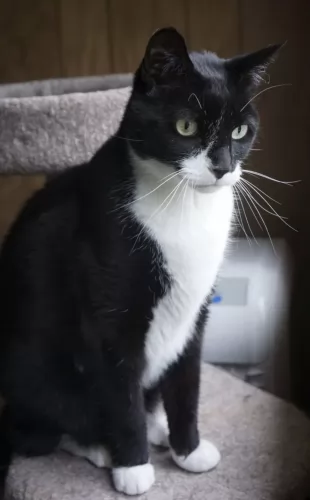 The Tuxedo cat is essentially a black and white cat and the name comes from him looking like he is dressed in a formal tuxedo.
The Tuxedo cat is essentially a black and white cat and the name comes from him looking like he is dressed in a formal tuxedo.
Tuxedos aren’t a new cat breed and they have been around for thousands of years. Tuxedo is merely describing the coat of the cat. So the Tuxedo cat isn’t a cat breed but rather a pattern color. A Persian cat as an example, can be a tuxedo cat because of its coat.
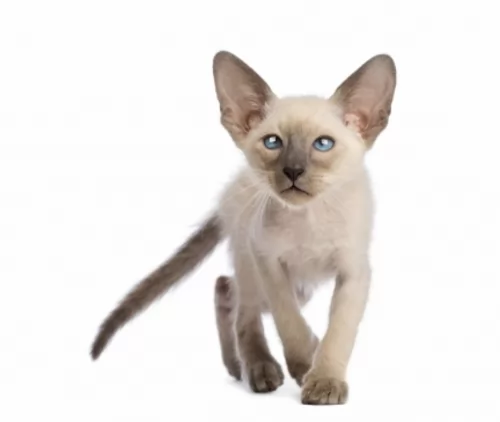 The Colorpoint Shorthair is a medium-size cat that typically weighs between 2 to 4kg and is nicely muscled. This is a long cat with legs that are long and slender too.
The Colorpoint Shorthair is a medium-size cat that typically weighs between 2 to 4kg and is nicely muscled. This is a long cat with legs that are long and slender too.
The coat is short and glossy, light-colored with darker extremities. Colors can be Cream Point, Red Point, Cinnamon Point, Seal Point, Blue-, Lilic- and Chocolate Point among others. The cat is well known for its mesmerizing almond-shaped blue eyes.
This sweet agile, athletic cat will be a delight in your home as he is highly intelligent and can easily learn a few basic commands but he is also friendly, playful, and loving. They’re social, outgoing cats too and when he’s not amusing himself, he will happily come and lounge about close to where his beloved human companions are.
On the other side of the coin, these cats can also be somewhat nervous and sensitive and they won’t adapt easily to a change in environment and lifestyle. It is why you have to choose your pet carefully and understand that owning a pet is a commitment of some 15 years or so.
Like the Siamese cat, these felines can be very vocal and they let you know when they want your attention.
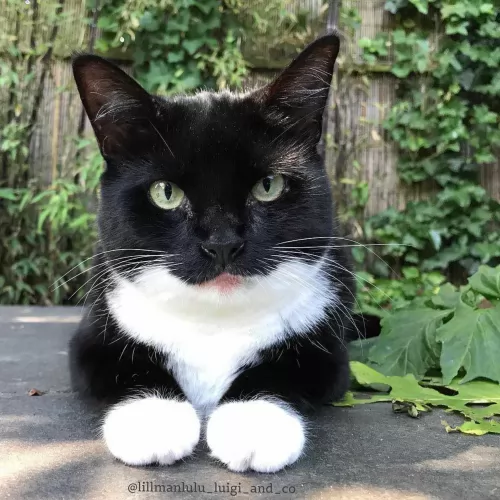 A tuxedo cat has distinct coat colors. Their bicolor coats are soft and sleek and sometimes the colors aren't limited to just black and white but they can be orange, gray or tortoiseshell.
A tuxedo cat has distinct coat colors. Their bicolor coats are soft and sleek and sometimes the colors aren't limited to just black and white but they can be orange, gray or tortoiseshell.
Because Tuxedo cats aren’t a breed, nothing is really set in stone with them and their size ranges. This means he can weigh between 3 and 7kg or 8 or even 9kg. The eyes of the Tuxedo cat are nearly always green.
The Tuxedo cat’s personality is varied as well because it can be any breed of cat. There are some Tuxedo cat owners who will say that their cats have a definite Tuxedo personality, but there is no research that indicates that these cats have a particular personality.
They are all different. Most Tuxedo cats however are friendly, social, loving, and lively.
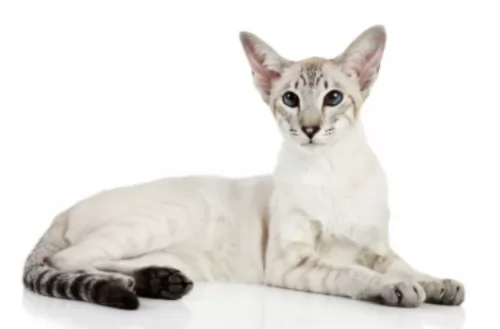 Choose the wonderful Colorpoint if you want a cat that isn’t cold and independent. With this cat you have one that is more like a companion and looks forward to being around you.
Choose the wonderful Colorpoint if you want a cat that isn’t cold and independent. With this cat you have one that is more like a companion and looks forward to being around you.
This is a loyal and loving cat who wants to be part of the human family and he wants to be involved in your life.
He suits first-time cat owners, those with children and pets in the home as well as being an excellent pet for seniors – anyone in fact, who is willing to bestow on him the love and affection he craves.
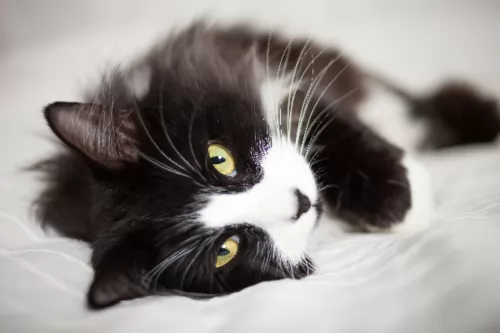 The tuxedo cat is such a sport - always up for fun and games. Cats like the tuxedo are always a great choice of pet.
The tuxedo cat is such a sport - always up for fun and games. Cats like the tuxedo are always a great choice of pet.
Cats like the tuxedo are also low maintenance and he is clever enough to even have a bit of training.
The tuxedo cat, even though he likes the outdoors, can also be an apartment cat. He also gets on well with children and other pets in the home. Having a tuxedo in the home is guaranteed to fill your home with joy, and you owe it to him to provide him with lots of love and attention.
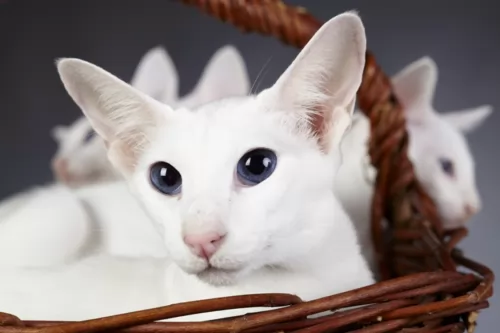 When it comes to the health of these beautiful cats, you may well find similar health issues as what affects the Siamese, some of which are asthma or bronchial disease, congenital heart defects and lymphoma among others.
When it comes to the health of these beautiful cats, you may well find similar health issues as what affects the Siamese, some of which are asthma or bronchial disease, congenital heart defects and lymphoma among others.
Lymphoma is cancer in the lymphocyte cells. Your cat will be lethargic and you will need to get him to the vet and provide the vet with a medical history of your cat. Lymphoma is believed to be associated with exposure to feline leukemia virus as well as the feline immunodeficiency virus.
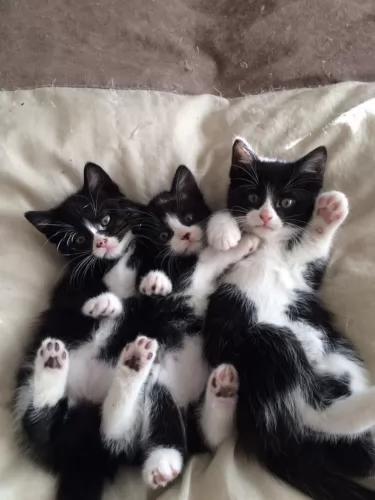 The Tuxedo cat has no real health concerns and that is just another reason why they make such popular pets. There are, however, always health issues that a cat can succumb to.
The Tuxedo cat has no real health concerns and that is just another reason why they make such popular pets. There are, however, always health issues that a cat can succumb to.
This is caused by kidney disease. It is one of the leading causes of death in older cats, and causes can include age but also genetics.
Your cat can show a number of symptoms such as excessive urination, nausea, terrible thirst, dehydration, constipation, and loss of appetite.
There is no cure for feline kidney disease but it can be treated and managed, and that is why you will need to see the vet.
This is the dreaded feline distemper for which your cat will need to be vaccinated against. It is a highly contagious viral disease, with kittens being more at risk.
After contracting the disease. It can spread through bodily fluids as well as fleas and is mostly transmitted by contaminated food and water bowls as well as litter trays.
The disease affects the intestinal tract of the cat and attacks the immune systems. Your cat will be vomiting, have diarrhea and anemia and he will have loss of appetite, lethargy and be totally and utterly down in the dumps.
Cancer is common in cats of all ages. When you brush your Tuxedo, be aware of any unusual lumps. Lymphoma is a common cancer in cats.
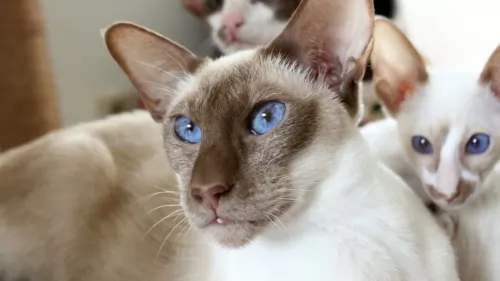 Rember that your Colorpoint Shorthair is a long, lean, musculac cat and for health purposes, you want to ensure a good diet of the best cat food there is. There are some excellent commercially manufactured cat goods available and it is wise to get to know the ingredients as meat and protein is high on the list. Cats are carnivoes and it is imperative to feed your cat high quality protein. When in any kind of doubt, speak to your vet about the best cat food available for your special feline friend.
Rember that your Colorpoint Shorthair is a long, lean, musculac cat and for health purposes, you want to ensure a good diet of the best cat food there is. There are some excellent commercially manufactured cat goods available and it is wise to get to know the ingredients as meat and protein is high on the list. Cats are carnivoes and it is imperative to feed your cat high quality protein. When in any kind of doubt, speak to your vet about the best cat food available for your special feline friend.
The short coat requires brushing once a week.
Check your cat over for any unusual lumps. Look at his eyes, check inside his ears for signs of redness and infection and check inside his mouth for signs of bad teeth as this can cause him terrible pain.
Provide a litter box and keep it scrupulously clean.
Have your cat spayed or neutered to avoid unwanted kittens and to also promote better health for your cat.
Provide your cat with a warm bed, food and water bowls, and stimulating toys.
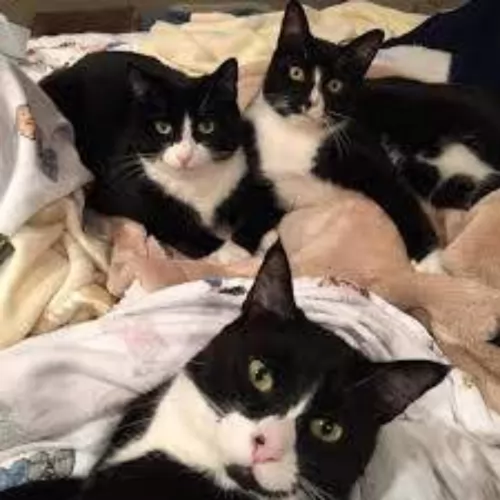 The Tuxedo cat is cared for in much the same way that you would care for any other cat really.
The Tuxedo cat is cared for in much the same way that you would care for any other cat really.
The coat of the Tuxedo requires no special treatment as the coat isn’t really ever long. Simply brush it at least once a week to reduce matting and dust collecting on the coat. You want to keep it shiny and sleek.
Provide a scratching post and a climbing tree as these are both taking care of natural instincts of a cat – to scratch and to leap.
Ensure your pet isn’t bored. Provide him with plenty of opportunities to have fun and to play. Provide him with interactive toys to keep him amused.
Cats like to sleep quite a bit so provide him with a nice soft bed in a quiet area.
If your Tuxedo is an indoor cat, he will need a litter box in a quiet area. Be sure to clean the litter box of feces every single day. Make sure that the actual litter is kept clean and tidy.
Your Tuxedo cat should be fed the same diet as any other cat. This is because every cat there is is a carnivore and their diet has to be made up of meat. A wet food diet or a dry food diet is available but make sure it is always of the highest quality. This will ensure your pet gets all the nutrients to ensure good health. Discuss your cat's s dietary needs with your vet if you are in any doubt.